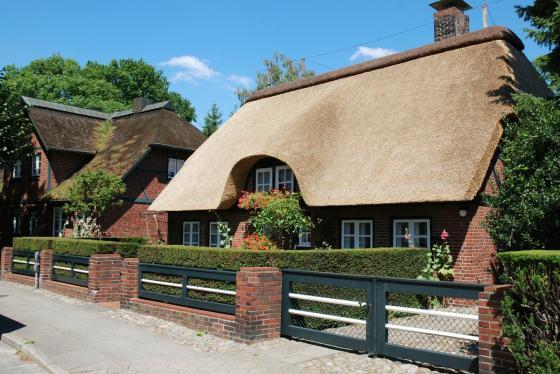952
Living house of reeds

We present you with the information, which kindly shared Raynur Akhmetov. Actually, it extracts from its correspondence on the construction. Interested people looking for ways, approaches, we like these people!
Reed - a unique natural material. It is going winter, preferably in February. After freezing it without much physical work gets off his boot. From reed mats of different thickness are knitted with a rope or wire. These mats can insulate the floor, walls, roof.
I know a company that is not bad enough to earn this. The Germans are buying up so all reeds around the banks of the Danube. Appreciate the natural ... »
"... In the Kaliningrad region. There were more German barracks. And interestingly, that the walls of the barracks were walled mats of reeds. They said if it do not like mice and cockroaches. »
"... Nature has tried to protect the stems from rotting, because the swamp is growing so slowly decomposed straw.»
"... Clay, which serves as a vehicle, acts as a preservative and prevents rot. We once formed two heaps of straw, one with the clay, the other - without it. Handful lay on the ground under the open sky one month of summer, autumn, winter and spring. After being stirred up, a bunch of clay hardly deteriorated, and a group without it pretty rotten.
Boards, smeared with clay, after cleaning them, in no way affected. And the village builders are careful in the construction, said that the wood contact with the clay - it is much better than, say, cement »
. "For the use of a cane. Dry was used in rural construction. It was possible to weave mats, bundles (like a carpet roll from overcoat), tightly intertwined, or simply adding sliced into the clay to facilitate the construction and insulation. Fresh (green - mostly - leaves) finely milled (Hacked - shredded) to get the juice and add the mass of the clay
. The result was a very durable natural stone mortar for masonry stones ligament. Drying buildings or blocks osushestvlyaetsya natural - warm summer air. From the strong sun buildings walls covered with mats, is not going to happen prior curing, but then - the maximum sun for solar drying. Otherwise, go with a non-uniform drying cracks.
However, they are simply a liquid clay-mash plastered. The roof did not put on the structure until it dries everything as it should. After drying competent building stood without major repairs for decades.
More barns in the suburbs burned. That is, are the walls without a roof, pre obsushennye, then draped dry bundles of reeds, distributing evenly ignited. If you consider it necessary - repeated several times in small portions. The result is dependent on local conditions - the quality of the clay and other
. Here I could not shed a vintage, in the district of an abandoned farm, gouging the middle of the wall - only the edges otkolupyvalos. While other houses and finger could pick open - rain and wind have made a sieve, because no buildings served not know how many.
And the barn was a strong walls and though that. Thickness ... did not measure - was small then, but judging by the fact that in the doorway on the sides instead of half logs were box - somewhere centimeters 30. »
"I would like to add about the reeds, then what I know of his life in the Altai Territory. The terrain there is very smooth, a lot of lakes, villages are often flush with the water level in the lake. Many houses of reeds, very cheap. Although near a pine forest, who are able, harvested logs.
For Kamysheva frame houses are built, as usual, in the Ark, for example. Cane is harvested in the winter, on the ice of the lake are driving a tractor with a mowing machine, a lot of the benefit of a cane. A matter of minutes, only to collect and take out.
Weave reed mats around 220H100H30 see, tying wire, top and bottom are cut exactly in height, the optimum size, low ceilings, is a tradition, probably to save heat.
In the future the wall at intervals of 1 m columns, between which is inserted into the mats of reeds, very quickly and effectively. One such mattress to put on the forces of one person (myself craving!).
The windows are made at intervals of individual mats by size. Inside and outside is sheathed all Tyczyn (small pines) from the column to a column diagonally at 45 degrees, 2 nail on Tychyna, or 1 per column.
And now comes the turn of Samana, daubed them all on both sides, 5 cm thick. The usual adobe with straw, pressed between Tychina to cane, holding firmly just "vusmert" tight!
Come and break this old house, stood for 50 years, oh and not an easy job - to destroy these 5 cm adobe
.! Inside - walls plastered, belyatsya local white clay, the feeling in this house is very light, the house breathes dry and very warm. A winter it does not spoil the warm, breathing far north passes through the lowland, with blizzards for three days.
Roof, floor like an ordinary house, the attic is filled with sawdust, and even bird droppings from poultry! Even the old log house old woman smeared with clay between the logs, certainly not blowing! Reed does not rot, is only half a century rusted nails in the corners, where there is no time to lubricate adobe.
Generally wisely said in the book about herself - the eternal homes does not happen and it is not necessary to build such. Any need to heat their house, there to live, look, and then the house lives!
I myself am a child lived in adobe houses, I know what it is, (a native of Uzbekistan), there is even a business exists for the production of bricks, just imagine for the future harvest, the house very quickly and then build for the season - turnkey! However, help the neighbors at a good tradition.
In general, the material chosen for the terrain and climate, though out in the "misty" England is also built of adobe. »
"And the logs do not rot, if the moss is - such a house will stay much longer. Plus, God forbid, there was a fire - moss does not burn or smolder. And if instead of moss is a tow, it may be left to smolder between the logs, even if extinguished the fire - and then everything can be repeated again
. And my relatives, when building a house, the roof put bundles of reeds, and over the reeds - the land. They say, so much warmer it becomes in the house. »
The house is really alive and strong only when there people live, when the master he has so zealous caring. I for his life many times convinced: whatever house was, what would the fortress was neither, but it's worth it to give up - and withers it begins to crumble. As a living creature, resentful people. You know, Master, I personally very pleased that's it: the eternal homes does not happen and it is not necessary to build such. Any need to heat their house, there to live, look, and then the house lives!
We have today a lot of these houses. How long have stood in bloom, but podi you, left of them, and suddenly began to fall roof, walls sag, vypadyvat frame. And recently, the stone saw, too thrown. I do not know, when he threw, but the roof has rotted and the walls are strewed. The sad spectacle.
Reed plates.
Explanation of columns:
Density. If the material may have a different density (kg / m3), all such variations are shown in the table.
Heat transfer. The coefficients of heat transfer materials greatly vary from directory to directory. I therefore propose to refer to these values as minimum or estimated.
The minimum thickness of the wall. This approximate value for the middle band Russia, where the minimum temperature does not usually drop below -30 ° C.
The correct thickness. The wall thickness of the chosen material, which is close to modern building regulations (SNIP).
The thermal conductivity is comparable with foam reed.
Today, it is the bourgeoisie of our own and other people's most advanced roofing material. Netherlands from Ukraine cars rush drags.
In general, the tree good, right in your edges. And we have built of reeds all the time. In the Belgorod plant reed was. In Kazakhstan, build the house of the reed plates, even the apartment.
With dried reeds no problems, because it is harvested in the winter, shovel the ice chopping, I took as a child. In my village, from his build, roof wing, stoked them. To protect against moisture, the walls daubed with clay mixed with straw. »
"And no plates did in my village. Knit bundles of reeds to a certain length and thickness and placed between the guides. Stove - it is interconnected bundles. Decomposed layer of a certain thickness, the reeds. Aligned end layout and intertwined with a certain step across, at my discretion is best synthetic twine, chopped off the second end - plate ready
. It turns like a flat harness, made of wires. »


Sunwell - unique technology takes the natural light into the darkened room
As a family of 4 acres collects 3 tonnes of vegetables and feeds all the restaurants in the city (video)























